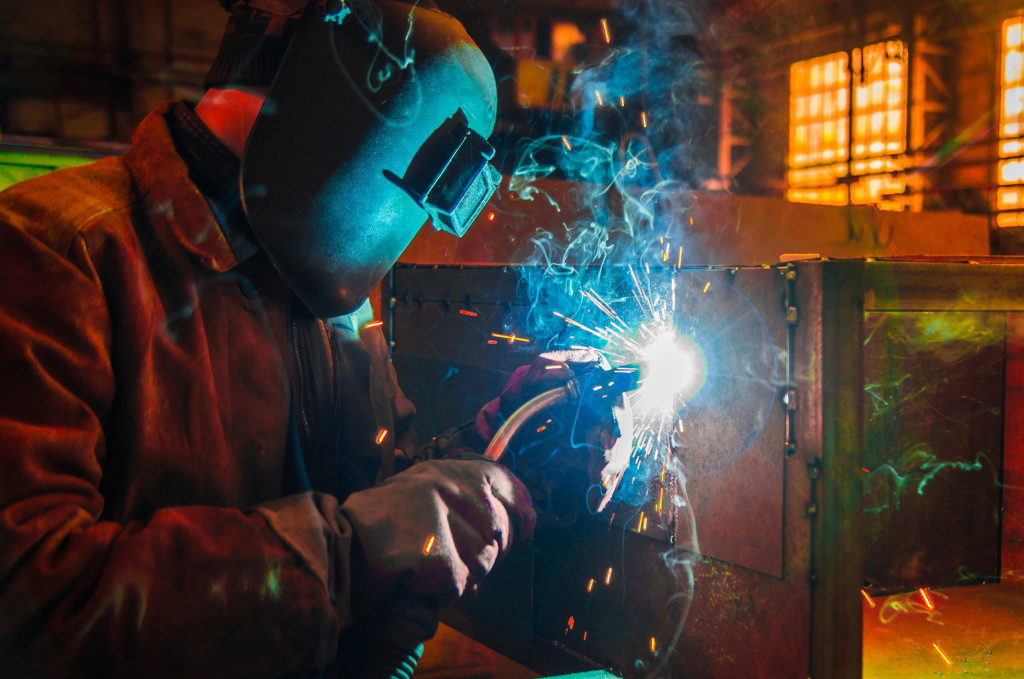Have you ever wanted to learn how to weld? Maybe you’ve seen some amazing metal sculptures or custom vehicles and thought to yourself, “I could do that,” or maybe you’re just interested in learning a new skill. Whatever your reasons, welding is a great hobby to pick up. But where should you start?
Here are the basics of what welding is, the different types of welding, and the equipment you’ll need to get started. By the end of this guide, you’ll have a good understanding of what it takes to weld and be well on your way to creating your own metal masterpieces.
What is Welding?
Welding is a process of joining two pieces of metal together using heat and pressure. The heat generated by welding melts the metals at their points of contact, allowing them to fuse together. Once cooled, the joint created by welding is just as strong as the rest of the metal piece.
Different Types of Welding
There are many different types of welding, but the three most common are MIG (Metal Inert Gas), TIG (Tungsten Inert Gas), and Stick welding.
MIG welding
MIG welding is the most popular type of welding for beginners. It uses an electrode wire fed through a hose from a spool, which melts and fuses with the metals being welded. The welder also has access to a gas tank that provides shielding from oxygen and other atmospheric gases that can contaminate the weld, which causes flaws.
TIG welding
TIG welding is similar to MIG welding in that it also uses an electrode wire; however, TIG welders do not have access to a gas tank. This type of welding is more difficult than MIG because the welder must manually shield the weld from contaminants using a hand-held torch.
Stick welding
Stick welding is the most difficult type of welding for beginners because it requires more precision and control than MIG or TIG. In stick welding, an electrode rod is fed through a holder and then stuck into the metals being welded. The heat generated by stick welding melts both the electrode rod and metals being welded, creating a strong joint between them.
Now that you know about the different types of welding, let’s move on to discussing the equipment you’ll need to get started.
Equipment You’ll Need as a Beginner Welder
The most important piece of equipment for any welder is a good quality mask—preferably one that covers your entire face so that you can avoid any harmful fumes or sparks. You’ll also need gloves, long pants, long sleeves, closed-toe shoes, and earplugs or headphones to protect your hearing. You will also need a grinder, pliers, and
In terms of actual welding equipment, you’ll use mostly the same things, but you might need to use different welding machines and flux, wire, or rod depending on what type of welding you intend to learn. Here’s what you need in general:
- Welding machines
- Welding pliers
- Grounding cables
- Clamps and magnets
For stick welding, you need welding rods. For MIG and TIG welding, you need gas, gas tanks, hoses, and solid wire or flux core.

Preparing Metal for Welding
Welding creates a strong, permanent bond between two pieces of metal. In order for the weld to be as strong as possible, both pieces of metal should be clean and free of contaminants. Dirt, grease, oil, and other chemicals can weaken the weld or cause it to fail
That’s why it’s important to clean metal before welding. You can use a grinder or wire brush to remove any dirt or debris, and then use a solvent such as acetone or alcohol to remove any traces of grease or oil. If you want to make sure that surfaces are clean, consider looking into premium weld fluids and solutions. These will be useful after welding, too, if you want to clean up your joints and slag or if you want to redo a joint. Once the metal is clean, you’re ready to start welding.
The procedure for cleaning metal before welding is pretty straightforward. First, use a wire brush to remove any dirt, grease, or paint from the surface of the metal. Next, use a grinder to remove any rust or corrosion. Finally, brush off any remaining dust or debris using a brush, a cloth, or a paper towel.
After that, you’re ready to start welding!
Making Clean Welds
Welding is a skill that takes practice to master, but with a little bit of practice you can learn how to make clean welds in MIG welding. Here are a few tips to help you get started:
- Always use the correct welding equipment for the type of welding you’re doing. Using the wrong equipment can lead to poor-quality welds and can be dangerous.
- When using gas, make sure that you are using the correct types of gas at the correct ratio.
- Make sure that your gas disperses well, and ensure that your hoses are not clogged.
- Keep your welding area clean and organized. This will help keep things safe and will make it easier to find what you need when you need it.
- Practice, practice, practice! The more you weld, the better you’ll get at it.
Final Thoughts
Welding is a great hobby for anyone who enjoys working with their hands or create things from scratch. It’s also a useful skill to have if you’re interested in working with metal or doing any sort of home repairs/renovations that involve metalwork. While it may seem daunting at first, with some practice anyone can learn how to weld like a pro! Be sure to follow all safety precautions when handling hot metals and always use proper ventilation when working with fumes from welding processes.











